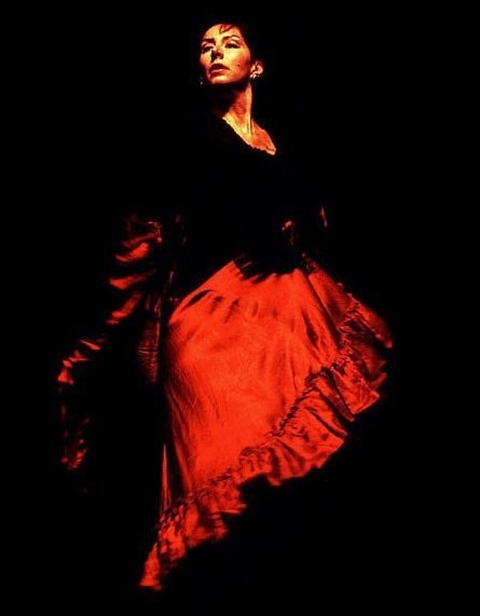Cool job: Flamenco dancer and teacher
All the time she was studying French literature, Evelyne Benaïs-Lemelin (BA 1988 UC, MA 1990) dreamed of being a flamenco dancer. In 1996 she followed her dream and started El Viento Flamenco, a troupe that toured Atlantic Canada for nearly 15 years. Several years ago, she moved to Paris, where she now teaches flamenco at a dance studio and to private students.
To the uninitiated, flamenco is big feathers, castanets and noisy feet. Tell me why it’s more than that.
When flamenco is performed right, it’s the interplay between the dance and the music, the improvisation, the wonderful spontaneity. Flamenco comes from the Romani people — they call themselves gitanos — of Andalusia, in southern Spain. It’s the music of an underculture, of bordellos, and it’s raw and very emotional.
You’ve studied piano. Must a flamenco dancer also be a musician?
Not necessarily, but a good dancer knows the music inside and out. I have students from China, Bulgaria, Poland. A lot of them don’t know the music. I teach them the music while I teach them the dance, because dance students who aren’t well-versed in the singing are not really dancing flamenco. They can only repeat someone else’s choreography, not create their own by improvising with and around the music.
Are the costumes an important part of the dance?
The long train, the shawl, the fan, the cane, the castanets — they can be beautiful, but they’re all accessories. People sometimes build the dance around props rather than dancing to the singing and the impulse of the moment. For the best spontaneity you want as few musicians and props as possible.
Art forms are influenced by the culture around them. What’s going on with flamenco today?
There’s a lot of pop music influence, and performances on big stages instead of in more intimate settings. The kind I like is not with 15 pirouettes — that’s the influence of ballet — where the surprise factor of improvisation is replaced by the “Wow!” factor. It’s Hollywood flamenco: too choreographed. Even in Spain. The last time I was there and saw one of those big performances I was bored to tears.
How did a girl from Sudbury get interested in flamenco?
My mother loved the music. She played audio cassettes and I got hooked. My first year at U of T, I saw dancing at a flamenco tavern called the Don Quixote on College Street. Is it still there? [ed.: No. The site is now home to an upscale Mexican place with live rock bands.] Learning flamenco was a dream during my entire university adventure. But only a dream.
So you kept dreaming about learning flamenco while you were working on your PhD, but never doing anything about it. When did you know it was time to choose between the two?
I realized that what I was doing was not my passion, the way it should be with an academic; I was married to a professor at the time, so I could tell the difference. At a crucial point I had two weeks in which I could either finish a major paper for my PhD or file an application for a grant to study flamenco. I wrote the grant.
After dancing flamenco for two decades, do you find it more difficult as you get older?
Actually, you can get better with age. Flamenco doesn’t destroy your body, so you can do it as an older woman. And with maturity you learn to let go of the desire to be a pretty object on the stage. You can focus on the music and dance. I belong to a group called Flamenco en France, which organizes parties where anyone can get up and dance. And occasionally I’ll go to a show where the performers know me, so at the end I’ll do a number. I keep my chops.






No Responses to “ Flamenco Dancer ”
Very well done. I like the bright colors and variety of subjects. Keep including the dates of activities so we can participate.